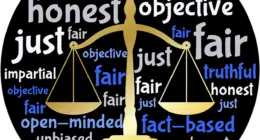Being bad refers to actions or behaviors that are morally wrong or harmful in some way. Evil involves a conscious choice to commit heinous acts and revels in inflicting pain and misery upon others.
TL;DR Bad Vs. Evil
“bad” refers to negative or harmful actions, which may or may not involve malicious intent. “Evil,” represents deliberate, malevolent actions intended to cause severe harm or suffering.
While both are undesirable, “evil” carries a more profound moral condemnation due to its intentional and extreme nature.
Bad
“Bad” is an adjective used to describe something that is not good, desirable, or morally right. It refers to qualities, actions, or situations that are harmful, unpleasant, or unfavorable.
“Bad” means something that is not good, harmful, or unpleasant. It’s like when you don’t like the taste of a food, or when someone does something mean or dishonest. It can also describe things that don’t work well or have a negative impact.
Evil
“Evil” refers to something profoundly wicked, morally wrong, or deeply malevolent. It describes actions, intentions, or forces that cause harm, suffering, or destruction deliberately.
It often involves a deliberate disregard for ethical principles, leading to suffering and misery for others. The term “evil” is commonly associated with malicious intent, cruelty, and an intentional desire to cause harm.
Evil actions are not just mistakes, but done on purpose to hurt others.
Bad Vs. Evil – Key differences
Bad
- Generally refers to something negative or harmful, but it may not necessarily involve malicious intent. It can be a result of mistakes or unfavorable circumstances.
- Often unintentional or accidental, lacking a purposeful desire to cause harm.
- Usually related to simple moral judgments, without indicating extreme malevolence.
Evil
- Implies intentional and profoundly wicked actions. It involves a deliberate desire to cause harm, suffering, or destruction.
- Involves malicious intent, where the harm is intended and purposeful.
- Carries a strong moral condemnation, signifying a higher degree of wrongdoing.
Examples of bad and evil
| Type | Bad | Evil |
|---|---|---|
| Behavior | Lying about a small mistake | Intentionally spreading false rumors to ruin someone's reputation |
| Act | Accidently breaking a friend's toy | Stealing from a charity organization to keep the money for oneself |
| Outcome | Forgetting to return a borrowed item, inconveniencing someone | Planning and carrying out a terrorist attack to cause harm and fear |
| Intent | Unintentionally hurting someone's feelings | Deliberately hurting others for personal gain or pleasure |
| Impact | Making a joke that unintentionally offends someone | Engaging in a systematic campaign of bullying to harm others emotionally |
| Motivation | Acting out due to frustration or stress | Seeking revenge and plotting harm against someone out of hatred |
Image Credits








